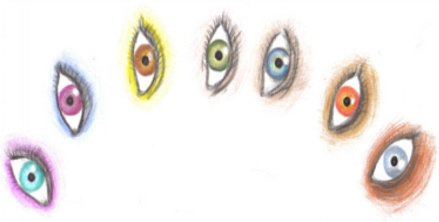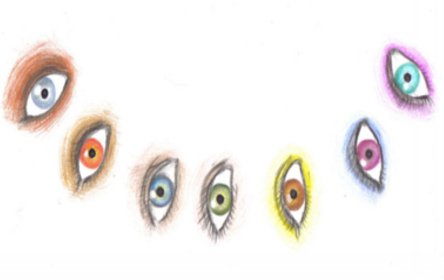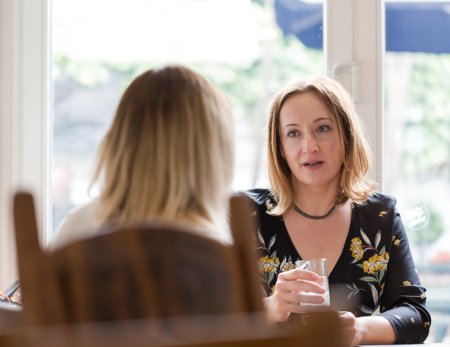- Home
- Coach Supervision
- Seven Eyed Model

The Seven-Eyed Model of Supervision - a guide for coaches
The seven-eyed model, originally developed by Peter Hawkins and Robin Shohet, is commonly used by supervisors to help their supervisees (i.e. coaches) reflect on the effectiveness of their coaching practice. You can also use it yourself, as a coach, to aid self-reflection, helping you to develop your own 'internal coach supervisor.' The power of this model comes from being able to view your work from seven different perspectives. Rather than just viewing your work through the lens of the interventions you used with your client or taking a judgemental stance about what you have done 'right' or 'wrong' it offers a variety of lenses which can provide deep insight into what is impacting upon the interactions you are having with your client.
As a systems coach, I love this model as it has made me more aware of all the different factors at play during a coaching session - if a session doesn't go well, it's not just a simple case of "my approach wasn't effective"; there are a lot more influences to consider. This means that I'm less judgemental of myself, and with more objectivity can focus on what I need to work on to make my coaching more effective.
Here, I've included a description of the seven different eyes, along with an example or questions you may ask yourself to help you understand each one:

Eye One: the client - what and how they present

Eye One is all about the client, and how the way in which they present themselves in a coaching session may reflect who they are and how they operate outside of the coaching session and in general life.
For example: if the client arrives tense and in a hurry, showing erratic thought processes, this could indicate similar patterns in their general day-to-day life.
Some questions for reflection include: What do you know about the client? How did the client show up in the coaching session? What issues did they present in the coaching session?
Through an exploration of this eye you can start to reflect on the influence the client themselves has on the work you are doing with them. e.g. you may discover that this client brings a recurring theme to the coaching or that they are showing a repeated pattern of behaviour that in itself may be worthy of exploration with them.
Eye Two: the strategies and interventions used by the coach

Eye Two is all about the intervention that a coach uses with their client. As you develop as a coach, you will build up a repertoire of tools and approaches and after a coaching session, it's useful to reflect on the tools you use and their effectiveness with that client at that moment in time.
You may notice that for each coaching session you're using the same tools and approaches, or that at a particular point your client showed a resistance to an approach you took, or that the tool you used offered limited further insight for the client.
Some questions for reflection include: Which tool or intervention did you use? What did you notice about how that tool or intervention worked with that particular client? What was the response of the client? What other approaches could you have taken?
Eye Three: the relationship between the client and the coach

Eye Three aims to examine the relationship between you (the coach) and the client. For this, you need to be able to take a step back and critically examine the working relationship you have with your client. This includes the contract or agreements made between you and the client: their needs and expectations of coaching and of you as their coach; your needs and expectations of them as your coachee; and any assumptions that are made on either side.
The vast majority of issues brought by coaches to their supervision relate in some way to the contract between them and their client. Often there is not enough clarity around what the client really wants and expects.
Example: You may have a client where it feels like you are doing all the work as the coach and taking responsibility for the client's progress in these sessions. Getting curious about this may throw up some further insights into what is expected of you, and whether this matches what role you are there to serve. Or maybe you have a client who expects you, as a coach, to have all the answers. In both these cases it may require you to have a further conversation with your client to clarify needs and expectations on both sides.
Some questions for reflection include: What's the relationship like between you and the client? What are the client's expectations of your work with them? How does this match your expectations? How explicit have these needs and expectations been made? During the session, how much work are you putting in versus how much work are they putting in? What is the energy like in the relationship? Is there any tension?
Eye Four: the coach

Eye Four allows the coach to analyse what they notice about themselves when working with their client. A client may trigger reactions in the coach, either in terms of how they present themselves or the material they bring to the session. Being aware of these reactions can uncover a wealth of information about the coach, any unconscious biases or prejudices they may have and topics they may feel less skilled at working with.
For example: If a client brings a difficult topic to the session that you personally have experienced it may evoke a painful reaction in yourself. Noticing this reaction and understanding it may help you to self-manage or indeed help you decide this is an area you feel less comfortable in supporting your client in. f a client reminds you of a particular person, a process called counter-transference may be taking place. This means that as a coach you are having an unaware reaction to a client based on their similarities to someone you already know. By becoming aware of this, you are able to act with intention as a coach rather than with reaction.
Some questions for reflection include: what reactions did you have to the client or the topic they brought? What changes in energy or bodily sensations did you notice as you worked with the client? Who does the client remind you of? Why do they remind you of this person? What differences are there between the client and this person?
Eye Five: the Supervisor/Supervisee Relationship

Eye Five relates to the parallel processes that appear between the supervisory relationship of the coach and the supervisor and in the session between the client and the coach. There may also be further parallel processes that are playing out in the wider context i.e. behaviours showing up in my relationship with my client are a reflection of behaviours showing up in the wider client organisation.
For example: In a supervision session, the supervisor may pick up a sense that the coach wants the supervisor to provide them with the answers to their questions. A parallel process may be playing out in which the client is looking to the coach to provide them with the answers.
Some questions for reflection include: To what extent are my own experiences as a supervisee a reflection of my client's experience when working with me? What similarities am I noticing in the relationship with my clients and the relationship I have with my supervisor?
Eye Six: the Experience of the Supervisor

Eye Six involves the supervisor being a reflective partner, and during a supervision session they will reflect useful information back to their supervisee about what they are experiencing.
For example: you, the coach, may be reporting back on an experience with a client, and the supervisor may interrupt you to say that during this conversation they are feeling uptight and anxious, with a knot in their stomach. You may then respond by saying that that's how you feel when coaching this particular client!
This method allows further information to surface about the coach-client relationship that might otherwise have been unmentioned and unnoticed, giving a deeper insight into the working relationship that you as a coach have with your client.
It's important to have a strong relationship between you and your supervisor, as you have to trust that the information your supervisor is providing you may have some value and may be worth exploring. However your supervisor should offer such feedback as data without judgement for you to decide whether to explore or not.
Some questions for reflection include: What emotions and physical reactions is my supervisor having during my supervision session? What does this tell me?
Eye Seven: the Wider Context in which the Work Happens

Eye Seven details how the wider system is reflected in the client's work.
For example: you may talk about how your client is not following through with their actions from each coaching session. By you as a coach looking at the wider system, such as the organisation in which the client works, you may begin to understand the reasons why the client does not behave in the way you want or expect them to. In the organisation that they work in, maybe nobody holds anybody to account? Maybe the client's behaviour is a reflection of the culture in the organisation? Or maybe this behaviour is a reflection of the client's own client group behaviour? I have worked extensively with organisations whose primary purpose is to reduce youth homelessness. Often I see the reactive 'drama-driven' behaviour exhibited by my client's clients (often vulnerable young people with chaotic lives) being played out in the culture of the organisation and at times within coaching sessions.
Some questions for reflection include: How is the culture of the client's organisation reflected in the work I am doing with this client? How is my client's home environment or their client's environment being reflected in my work with them.
The Seven-Eyed Model: a Summary
After having understood all modes of the Seven Eyes, it can be helpful as a coach draw upon all Eyes as appropriate within your work and within supervision sessions.
A coach supervisor may point out some of these factors in a coach supervision session, providing you with useful feedback and without a supervisor you can reflect on some of these factors yourself.
If you are looking for a supervisor, or any more information on the Seven-Eyed model, then please get in touch using the rapid response form below, or contact me on +44 (0)747 040478




